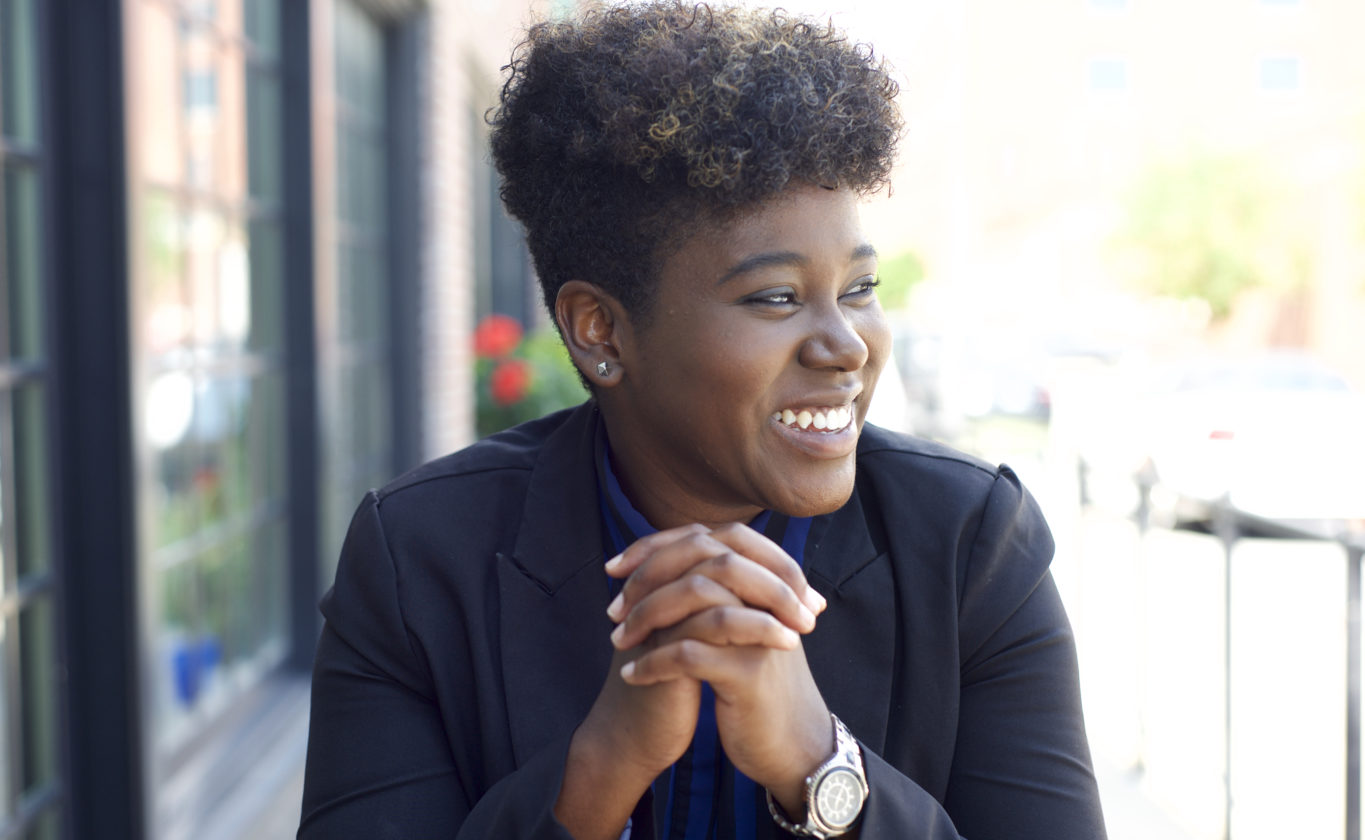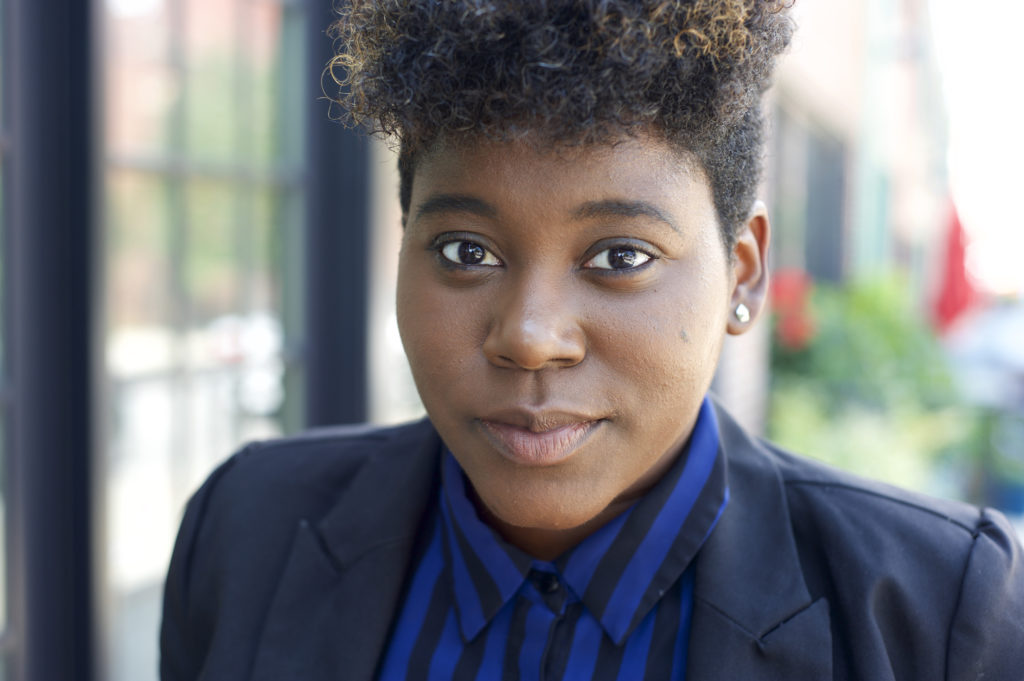
FTF Board member De Nichols, photos by Lindy Drew
There is an extreme danger in making gross assumptions about the people who are on the ground, the people who are organizing, and the people who are taking a stance in this movement. A lot of people say that this is a leaderless movement, but I say the opposite. It’s a very leader-full movement because there have been so many people who have taken a rise in a unique way using their skills, their networks, their connections to make progress in different areas. There was a woman who came from San Francisco just to volunteer with the Hands Up United group and she started a Youth Tech initiative that is now training young people to code. This is a very digitalized movement, and learning those skills – bridging that gap – is a point for creating opportunity. That is an opportunity to fill the gap between what young people are learning in schools and what they seek to give to society. By approaching them on the front lines to teach them a new language like coding and help them channel their energy in an innovative way, we help equip them toward building tools relevant to progressing our current and future society. We make a huge misstep when we allow people in our circles to say, “These are ‘knuckleheads’ who are disorganized and don’t have guidance,” because that type of thinking disengages us from seeing what their power and potential are.
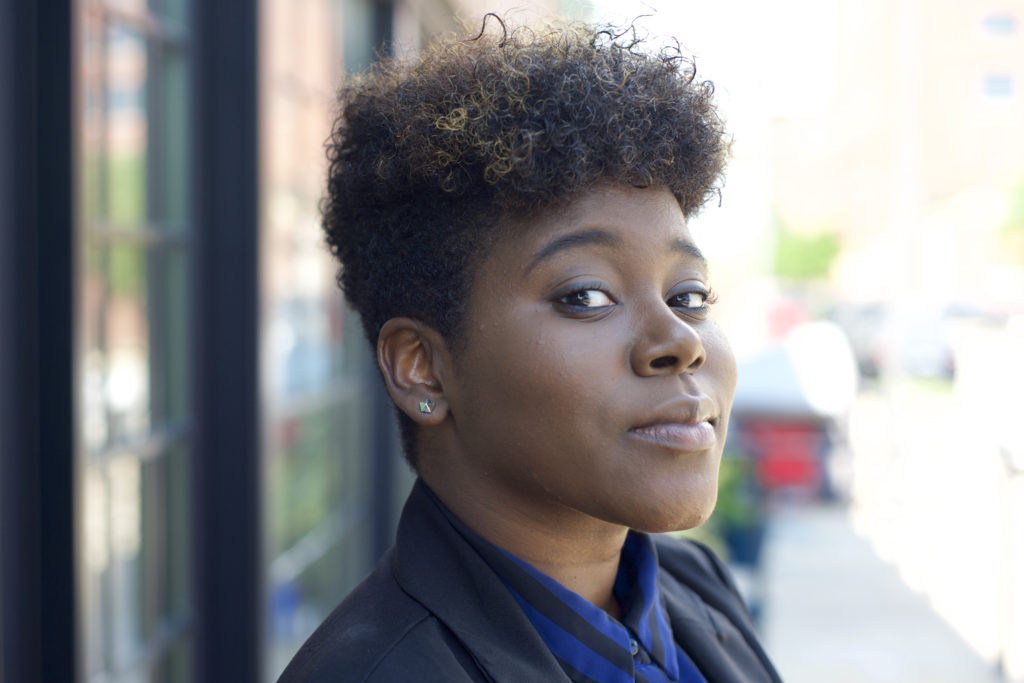
When we’re making the assumption that no progress has been made, we have to take a step back and look at the bigger picture. This is a movement for Black lives, and this issue of the dehumanization of Black lives has existed for over 400 years. So, one year responding to Ferguson – or, if you take it back to when the Black Lives Matter organization was created after the shooting of Trayvon Martin, two to three years of organizing — is not going to unravel everything that’s been happening over the last 400 to 500 years. There has to be a space for grace and a space for patience and a space for resilience if we’re all going to get through these moments in this movement.
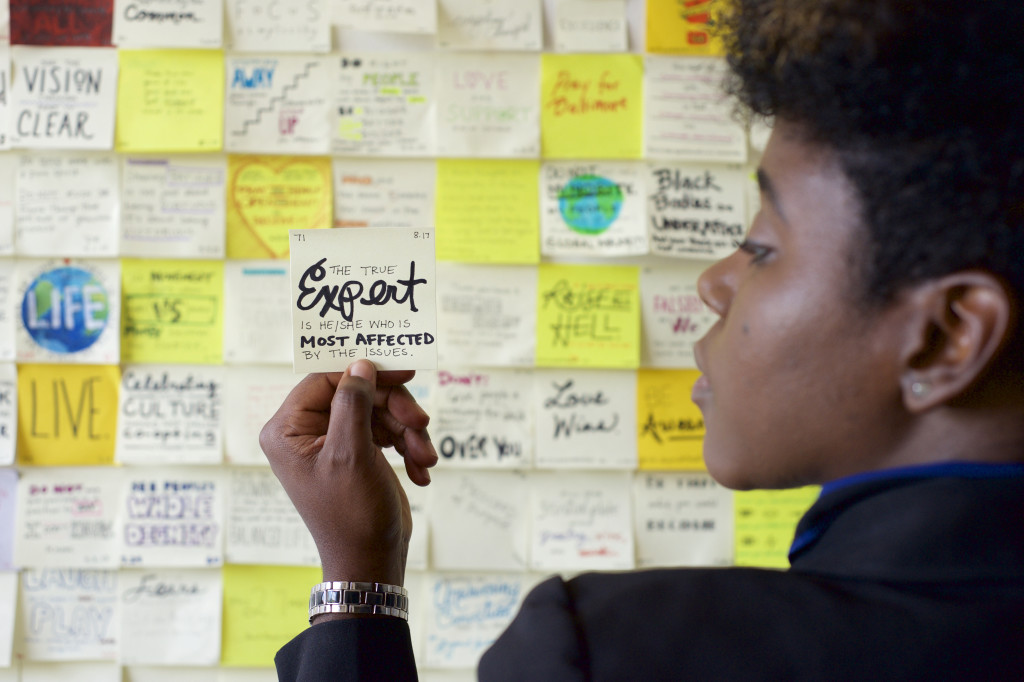
“Why did you decide to do #stickynotetoself?”
The first one was on April 1st, 2015. It was just me sitting at my desk thinking about stuff that I’d been seeing across social media. And I wanted to set a reminder for myself to do good work, not force things, and be good to people. I felt like a lot of people around me were getting into these conflicts with each other because they were trying to force relationships, force projects to happen, force collaboration. I wrote the first of that series and left it at my desk. And then each day, I would start reflecting on things I was seeing in the movement, things that were happening in my own personal life, and I reminded myself of certain values I did not want to lose.
One of the things my mom used to say to me when I was a kid – and she said this a lot when I was in high school and going off to college – was that, “I’m someone who’s in the world, but not of it.” I think about that in the movement a lot because I’m in the movement and, in some ways, I am of it, but I’m not caught up in the drama that can sometimes arise. I’m not caught up in the financial woes of it. By grace, endurance, and faith, I can do good work and still maintain my inner joy. I never want to lose that. I hold fast to things like joy, integrity, truth-telling, and grace in all that I do because these are the things that make me “me.” I don’t want to lose my own sense of dignity or miss out on seeing the dignity in others.
I think about this with the #StickyNotetoSelf project. In all that I do, this is my self-care. When the nine people in Charleston were murdered, I wrote their names on a sticky note as a reminder to myself not to forget them; not to forget that their lives are part of why we fight and this type of domestic terrorism against Black lives is the big picture. A lot of people say it is not just about Ferguson. It’s more than Ferguson. I agree with that. It’s about these nine lives, too, who weren’t killed by a police officer but were still killed by White supremacy.
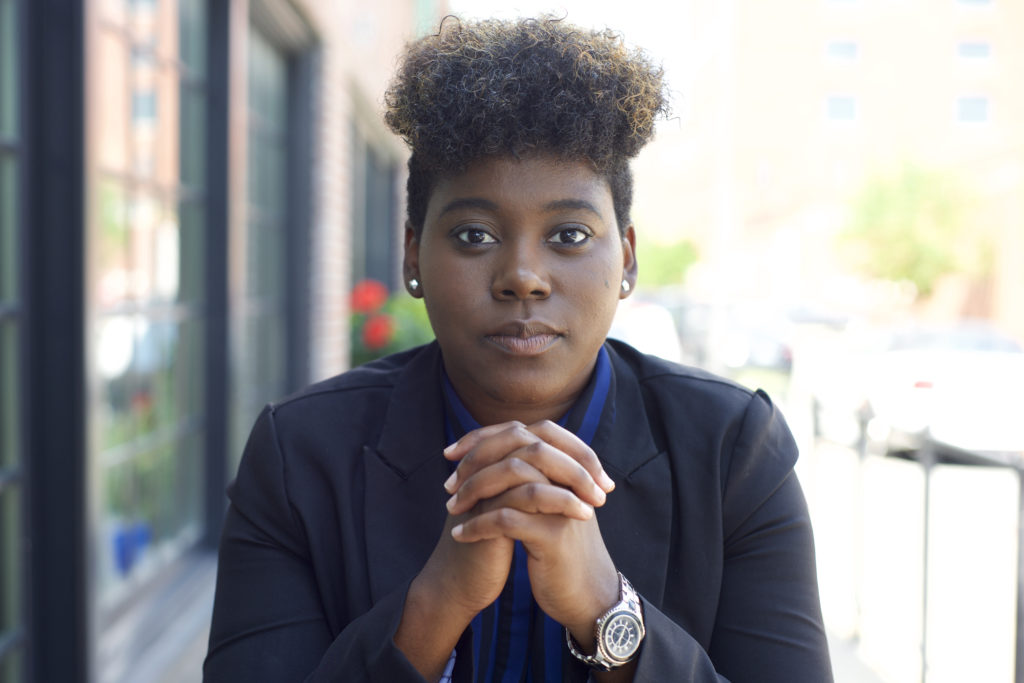
I got a lot of responses to this one #StickyNotetoSelf that says, “Black bodies are under attack and your black a** is not immune.” It was something I said to one of my neighbors because he learned that I was in this movement and told me, “But if you keep doing what you’re doing… you’re educated… and you’re this, you’re that…” What I meant by my response is that none of those tokens of privilege are going to protect me from the prejudices and the hatred people have against people who look and love like me.
I used to be one of those people who cared about respectability. Growing up in Mississippi, my mom and grandparents taught me to always carry myself to earn the respect of others, to present myself well, and to show my smarts. This was internalized. And so, yes, my hair was straight for a long time in my life. I looked professional. I played the part. And I was really preppy. But at the same time, I would question, who do I have to appease? No one. A lot of those insecurities, those worries, and those pressures kind of died away because of this movement.
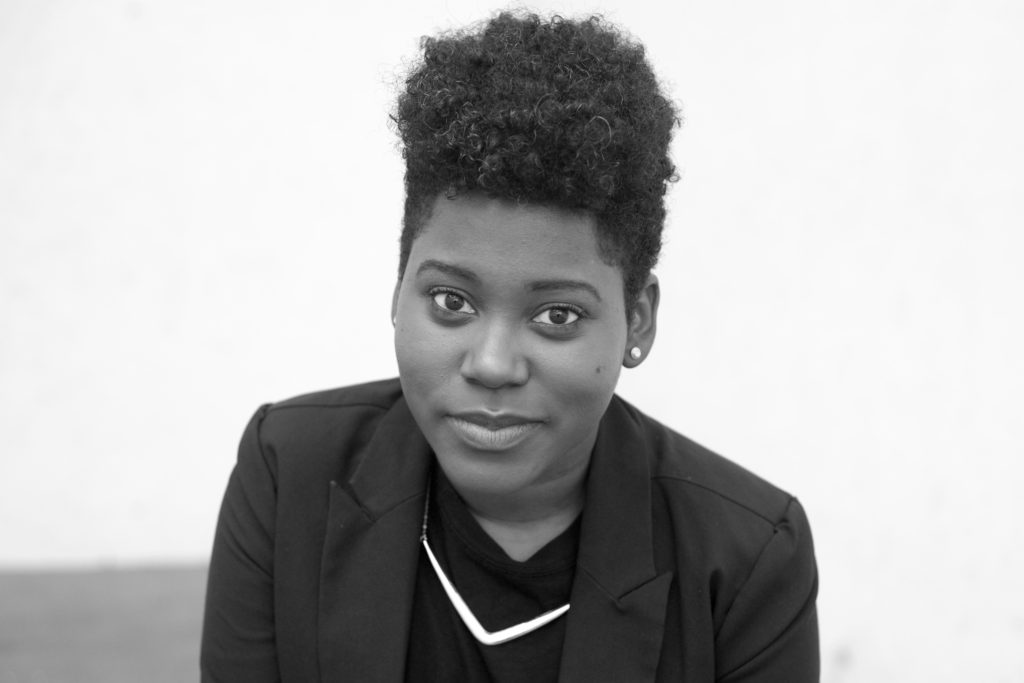
In third or fourth grade, I was living on a dirt road in Mississippi, and one day I was sitting beside my cousin on the school bus. A kid behind her started teasing her and saying racist things. She turned around and told him to stop. He eventually pushed her and, out of nowhere, I curved around to his seat and just started hitting him as hard as I could. The driver stopped and had to pull both me and my cousin off the kid. The next day at school, they had video footage of us fighting. The principal brought all the students from that bus ride into the library and asked, “Why were you fighting?” I told them, “He was teasing us because we are Black and I’m not going to allow that.” We actually did not get suspended from the school bus.
A lot of people ask, “When did you come into the movement?” as if August 9th was the beginning. For me, the work started with fighting racist kids taunting my little cousin and me. It started with standing up for myself against being called the N-word by anyone, nor letting that happen to others. I think about those early moments a lot because I wouldn’t have guessed they would lead me here. Fist fighting was the wrong outlet. But, for me, fighting back was still right. As I grew up, I learned how to fight back in more powerful ways – through my art and through bringing people together who are different and helping them see our commonalities. Sometimes doing that is enough. And I’ve learned you’ll soon enough get the support you need to keep doing it.
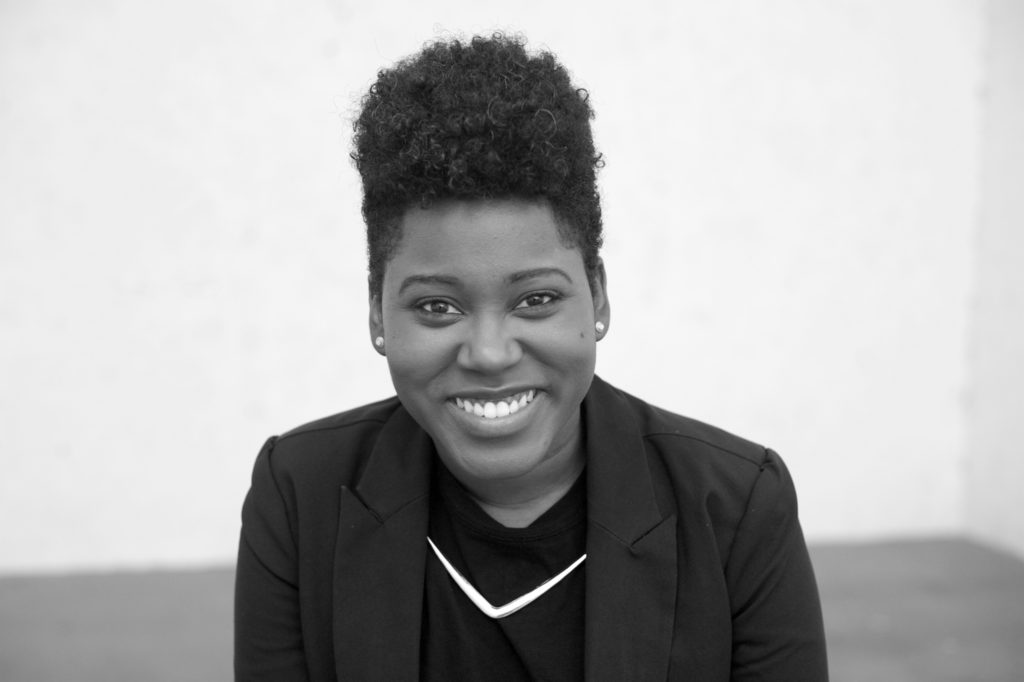
There are a few conversations I’ve been having with friends lately that show the need for a deepening sense of Racial Equity. I co-organize a series of potluck dinners called FoodSpark. One woman who moderated one potluck about the end of desegregation in St. Louis public education started sharing her own stories about being in that program. Another friend brought up how 30 schools in St. Louis Public Schools tested positive for lead and had to close their sinks. At the same time, in the wealthy suburb of Ladue, there were people trying to sponsor water fountains that would feature their names on gold plates. These are two different school systems and two different sets of challenges and realities. If we, as a people, had greater concern for students of color, for students who are economically challenged, perhaps folks would say, “Sponsoring this fountain is excessive. When we see our brother or sister school system in struggle, how about we use some of that privilege we have in ours to help out?” That’s an example of a divide that a Racial Equity lens allows us to close.
I look at that division on the macro level, but it also breaks down to all the hodgepodge communities we have in the region. When you can drive down Kingshighway and encounter so many economic levels, streetlight by streetlight – knowing that folks in fancy homes in the Central West End likely are not engaging with folks in the Academy neighborhood north of Delmar – there has to be something that allows us to think about ways to fix these divides. The lens and umbrella of Racial Equity enable us to think more comprehensively about those dynamics. It’s both macro and relational and deeply personal all at the same time. And that’s why it matters. A crucial opportunity exists in galvanizing and convening organizations across the city to adopt and activate shared values, programs, and internal policies that align with the values and actions set by the Ferguson Commission and report. The report serves as both a compass and a path for all of us to share, and that is something we have not ever had before. Collective alignment is our greatest opportunity.
In this movement, there’s something for everyone to do.
The biggest challenges are our region’s fears, systems, and internalized reasons for not pursuing this path towards change. It is hard to look in the mirror at the complex ugliness that racialized policies and norms have blighted upon our city. It is hard to unravel such an intricate and interconnected system-of-systems of oppression. It is easy to turn one’s head, continue harmful behaviors and policies, sustain the oppressive systems, and maintain the status quo of how we have lived as a region. Forward Through Ferguson is ripe with fresh energy and foundation to show everyone else the big vision. It has already solicited so many ideas and answers for the issues that exist. And, it has the creativity to make this work less daunting through the ways it sets to match, convene, and facilitate the activation of the 189 actions within the report.

This actually came up at a Ferguson Commission meeting. I wrote this sticky note after hearing a speaker say the shared nature of calling people “minorities” in this nation is inaccurate, because if you look at it on a global scale – and we say we’re a globalized society – people of color are actually the majority.
I have a little brother whose name is Michael. And my little brother Michael aspires to be the next Michael Jackson. But we have so many entities in this nation and in this world that are striving to make him another Mike Brown.
When I first found myself out on the ground in Ferguson, I had a series of nightmares that kept me up constantly. I ended up being hospitalized from the stress and the toll it was taking on my body. Part of those nightmares and experiences was from the terror I felt as a woman of color and as a sister of men of color. I often thought about how I have a little brother whose name is Michael. And my little brother Michael aspires to be the next Michael Jackson. But we have so many entities in this nation and in this world that are striving to make him another Mike Brown. We have so many cases and instances of young people of color who are dehumanized through the violence of our police, the violence within our communities, the injustices that are in our educational system like the school to prison pipeline, the inadequacies of health care that is provided within communities of color all across this nation, including our own, and all of this matters to me because I will bare children who will live in this world. It is of utmost importance to me to support all of those who are living their lives and making that deep investment and commitment to assure that their quality of life, their wellbeing, their opportunities are just as valued and possible as our counterparts who live in the county and in lives where they don’t have to think about violence, or hunger, who they’re going to be, or how they are going to pay their bills.
I know I cannot pay back any of the support I’ve received in my life. However, I can pay it forward.
I grew up in a household with a single mom and we constantly had to worry about these things. Luckily, for my family, we made it through. And we made it through from the support, connections, and collaborations from people all across our community who invested in our lives, who shared resources, who stood up for local policy change, and who made a difference through the ways they navigated the world. And, because of that, I know I cannot pay back any of the support I’ve received in my life. However, I can pay it forward. And I live every day of my life doing that. I do it by teaching young people how to create the solutions that matter to them. I do that by working with communities in collaboration with stakeholders and gatekeepers and young people and families to listen to community members and their hopes and their aspirations because not enough people are doing it. I want to support that and I need to support that. It would be a shame if I didn’t.
There are many things in our near future that are going to test and shake things up in this city in a way that’s going to progress the livelihoods of every single person who lives here. The possibilities of what we can create are limitless. And, that is the type of fire, that is the type of drive, passion, and commitment that I am ready and willing to give and share.

A lot of my earlier moments in this particular movement in Ferguson were largely through the activities of supporting protests and being an activist on the ground. I was able to create various ways of connecting allies in other cities to do this work. Part of that was through the Connected for Justice platform that I created in October of 2014, and part of that was also through Artivists STL, bringing artists and performers into the mix of the movement in a way that allows us to make the calls to action and the policy demands even more accessible to people who are just now entering a lot of the vocabulary around this work and a lot of the policies, procedures, and processes that are to come.
It matters me that we have an umbrella of Racial Equity. It matters to me that our lives are at the forefront and it’s not necessarily just about the rhetoric of what needs to be happening, but the actions of how we’re going to get there. It matters to me that this work, moving forward, is going to be highly collaborative. In a lot of my own passions and projects, collaboration is quintessential to what we do. Nothing gets done in a silo. With the work to be done together, there are a lot of connections and networks to be brought into the fold.
-De Nichols, Co-Founder of Civic Creatives and Forward Through Ferguson board member

